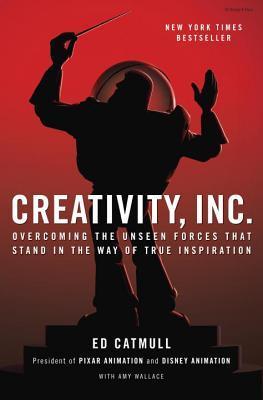- The Good: Management philosophy told through the lens of Pixar’s history
- The Bad: Self-aggrandizing and overwhelmingly positive
- The Literary: Afterwords, summaries, and an index that are highly useful
Co-founder of Pixar Animation Studios Ed Catmull delivers a book about management through the lens of creativity and the history of Pixar as a company and as a culture.
The book begins with an “about me”, detailing Catmull’s personal journey and his early dream to make the first computer animated movie. He discusses the freedom he had while getting his PhD at the University of Utah, where many other famous computer scientists also got their start, as well as forging a partnership with George Lucas, which eventually led him to founding Pixar with Steve Jobs and John Lasseter in 1986.
I don’t like the first section of this book; in fact, I nearly gave up. Catmull speaks about this time as a golden age of possibility, where all the famous people, who were invariably white men, came together to make great things happen. I assume an editor must have told him he needed to legitimize himself as someone with clout, someone to whom other management types should listen. And it comes off as self-aggrandizing.
Thankfully, Part II and beyond focuses on Pixar’s journey, the ups and downs and unknowns of a company that didn’t deliver a successful product for nearly a decade, that cost Steve Jobs millions. Catmull is able to balance two stories here. One about why Pixar is so successful, from providing a safe creative culture to postmortems and Braintrust sessions. The other is about management style and nurturing successful teams.
I find both stories fascinating, as a lover of stories and many of Pixar’s films, and as a leader of teams. What’s so magical about Pixar is its success in generating a profitable business from something that cannot be bottled or produced on demand—creativity. Creativity and storytelling also need passion, but Catmull contrasts Steve Jobs’ passion and success with Pixar’s success. Despite all of Jobs’ success, which many attribute to his unwavering passion, he recognized that Catmull and Lasseter and their teams had something he did not have—the ability tell a story with emotional authenticity alongside new technological innovations.
The book is unnecessarily positive. Catmull does discuss setbacks they encountered on specific projects, or projects they abandoned. But I wish he had admitted that some projects fell short. You cannot deny that The Good Dinosaur and Onward are not in the same category as Toy Story and Up. Of course, these sub-par Pixar films were released after this book was released in 2014. But I do find it interesting that Pixar has become so hit-and-miss since around the time of this book’s publication.
I like that Catmull dismisses management platitudes as generally unhelpful. That t-shirt slogans and reductive truths only give an illusion of understanding. That an adage worth repeating is also halfway to being irrelevant. But that said, he does have a few take-aways he provides as prompts or starting points. My favorites include:
- Give a good idea to a mediocre team, and they will screw it up. But give a mediocre idea to a great team, and they will either fix it or come up with something better.
- It’s not the manager’s job to prevent risks. It’s the manager’s job to make it safe for others to take them.
- The cost of preventing errors is often far greater than the cost of fixing them.
- Do not assume that general agreement will lead to change—it takes substantial energy to move a group, even when all are on board.
Highly recommended if you love Pixar films and are interested in the craft of making them, and also if you want to read a management book that’s actually interesting.
